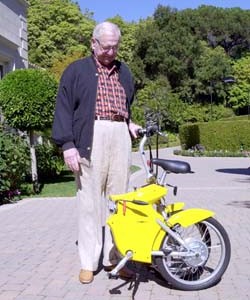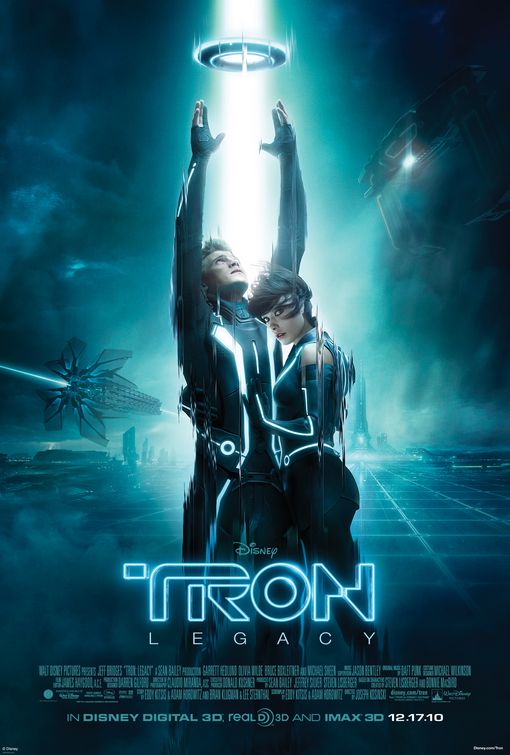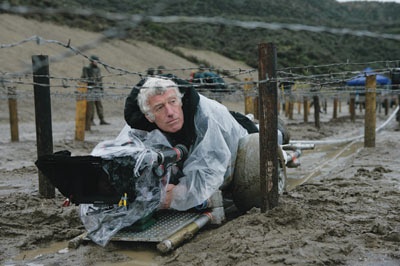About Us Category Content

As you may have noticed, we weren’t always called SimpliPhi Power. In fact, we started out as the LibertyPak company back in 2002 and have been perfecting our innovative energy storage and management technology ever since.
Since then, we've brought unparalleled off-grid power to everything from the giant moon on Conan O'Brien's set to U.S. troops in Afghanistan and Iraq, to rooftops for Whole Foods and Airbnb. And we provide patented energy storage systems that are safer and more efficient than any others on the market.
It all started in 2001, when our CTO and founder, Stuart Lennox, was working as a production designer for the film and television industry. He needed a cool-looking bicycle for a commercial shoot and thought the Lee Iacocca e-bike would be perfect.
“It was a folding electric bicycle that was lightweight and very fast,” remembers Stuart. “It had a cool look, and I was so impressed with the battery in it, I took out a loan on my home, went to e-bike and had six custom battery prototypes made that could be used to power 35 MM movie cameras and portable lighting to my specifications.”
The prototyped batteries worked so well that Stuart’s connections in the film and television industry started asking for more. Stuart had found his calling in off-grid energy storage for remote applications and founded LibertyPak a year later in 2002.
Powering Mad Men, Avatar and Tron Legacy
The LibertyPaks and LibertyBelts have been used widely on movies and television shows, such as 30 Rock, Mad Men and more recently Inside Amy Schumer. James Cameron’s production company Cameron-Pace used LibertyPaks on Avatar and Tron Legacy. In fact, the lights built into the Tron Legacy suits are powered by LibertyPak. After discovering us, award-winning Director of Photography Roger Deakins started using the LibertyPak batteries on all of his films. He’s famous for his cinematography in James Bond’s Skyfall, True Grit, No Country for Old Men, Jarhead and others.


"These belts are incredible,” Deakins’ assistant camera operator said while on the set of Jarhead. “We are chasing tanks through the desert; there’s oil, dust and smoke; and there is no time to change batteries. With these, we never have to worry.”
Today, the LibertyPaks, LibertyBelts and the Baby and Big Gennys developed later, are widely recognized as the movie and television lighting industry’s most reliable and highest-performing portable power source. But Stuart didn't stop there.
The Move Away from Lithium Cobalt
The first LibertyPaks and LibertyBelts utilized lithium-ion battery chemistry with cobalt, which was a break-through technology in the early 2000’s and is still used by some battery companies today. One of the main advantages of the cobalt-based battery was its high energy density. However, Stuart found that this chemistry has inherent performance drawbacks, especially for holding larger amounts of energy, such as excessive production of heat, volatile chemical instability known as ‘thermal runaway’ and a very short cycle life of, at best, 600 full charges.
“Although cobalt-based batteries were a revolutionary improvement from the lead acid, nicad and NiMH batteries that were made for motion picture cameras, there were drawbacks, such as the potential for causing fires, temperature sensitivity and limited high output,” recalls Stuart.
In 2007, the first lithium ferrous phosphate (LFP) battery cell prototypes became available. Stuart immediately recognized that if managed well, this chemistry had the potential to offer greater efficiency and safety than other battery formulas. He refined the chemistry, and developed a proprietary battery management system (BMS) and architecture. And as a result, he dramatically improved the delivery of off-grid power for our loyal customers.
Stuart's proprietary combination of LFP chemistry, BMS and architecture allows our plug-and-play power packs and larger energy storage systems to outperform our competitors' lithium-ion cobalt-based batteries in multiple ways:
- Eliminates the risks of thermal runaway
- Needs no expensive and bulky cooling or ventilation to prevent heat build-up
- Operates at unparalleled 98% efficiency for more than 5,000 cycles
- Offers up to 100% depth of discharge
- Can cycle daily for 10 years
- Provides 80% savings in operating cost per kWh vs competing batteries
- Overall offers a more robust, safe and efficient delivery of power
The Little Genny (short for generator) was the first product to be commercialized with lithium ferrous phosphate. With this new product, the number of battery cells used was greater, and the arrangement of the cells was more complex, as were the power electronics to manage the flow of electrons in the charge and discharge cycles.
The Little Genny and its later counterpart, the Big Genny, provide both direct current (DC) and alternating current
(AC) energy storage solutions for the most demanding performance profiles, equipment specifications and production environments beyond the limits of the grid. We continue to solve difficult off-grid power storage requirements for production crews across film, digital photography and broadcast news networks to provide state-of-the-art solutions to the film and television industry with the Little and Big Gennys.
For example, the production team for Conan O’Brien’s TBS late night show Conan struggled to power the 3D moon that
hung over his head on the set. They needed lightweight and compact energy storage that could light up and move the moon throughout the show, without excessive heat, noise and re-charge times. Stuart introduced them to the Big Genny and worked with their special effects and props department to bring the Conan moon to life.
Expanding into New Markets
In 2010, Stuart teamed up with Catherine Von Burg, now SimpliPhi’s President and CEO, to leverage the proprietary LibertyPak platform technology for use in a wide range of business and consumer products. Together, they designed a new product line called Optimized Energy Storage (OES), which included the OES2.6 and OES3.4 energy storage and management solutions.
“Our drive was to bring the same power security and energy resiliency the film and television industry was enjoying to the residential and commercial markets. Whether on or off grid, people were expressing a desire to have more control of their own power, either for back-up security, peak-shaving, load shifting or the resultant cost saving benefits from all the functions that efficient and safe energy storage afforded,” Catherine recalls. “Yet, we knew we had to keep things simple and user friendly. So we ensured our OES line was lightweight, non-toxic, maintenance-free and provided seamless integration with renewable power sources in conjunction with or independent of the grid."
Catherine and Stuart expanded into new global markets that need reliable, off-grid power solutions that offer a longer life cycle and that don’t build up excessive heat and don't risk dangerous thermal runaway. Today, these all-electric Gennys are the premiere portable energy sources powering the sophisticated equipment used in the harsh conditions of disaster relief and emergency medical support.
Catherine and Stuart saw an opportunity to expand use of this unique heat-safe battery technology into the most rugged conditions for military, expeditionary and remote monitoring applications. At the time, an Army Environmental Policy Institute report calculated that the Army was suffering one casualty for every 24 fuel resupply convoy in Afghanistan alone. And a Deloitte study for the U.S. Army found that increased use of alternative energy sources could significantly reduce wartime casualties. It found that even a modest 10% reduction in fossil fuel consumption could save 35 lives.
“The military was attempting to bring portable solar generation to the front lines in Afghanistan and Iraq, but they were doing it with inefficient lead acid batteries,” remembers Catherine. “They were heavy and toxic, and their labels said they would last for years, but in reality, they were only lasting about eight months. We heard stories of the landscapes of these war zones littered with abandoned batteries.”
SimpliPhi Power partnered with ZeroBase to replace lead acid batteries and drastically reduce heat-generating use of traditional generators that can give away the location of forward operating bases. We provided silent, portable, durable and non-toxic solar energy systems with SimpliPhi batteries that are now used by the military in Afghanistan, Iraq and other countries. Our stealth power systems have dramatically reduced the number of fuel transport-related casualties.
In 2011, when the magnitude-9 Tohoku earthquake shook northeastern Japan, unleashing a savage tsunami and the level-7 meltdowns at the Fukushima Daiichi Nuclear Power Plant, Stuart and Catherine miniaturized the Little Genny, into what’s known today as the Baby Genny. The portable consumer and emergency relief off-grid power solution was embraced by humanitarian agencies and launched the company’s emergency relief product line.
The Global Market - at a Tipping Point
The potential global market for energy storage is vast. And SimpliPhi Power is at the cutting edge - ready to provide breakthrough technology in multiple ways for businesses and consumers everywhere. New game-changing products are coming. And to reflect this, Catherine and Stuart have now rebranded LibertyPak/OES as SimpliPhi Power.
“We wanted to capture in our company name what our technology does for energy storage,” says Catherine. “Our new
name incorporates ‘Phi’, the Greek mathematic symbol for the Golden Ratio, because that explains what our technology actually does: it will simplify your power, whether in conjunction with, or independent of, the grid.
"In nature and in man-made design, the golden ratio achieves balance, symmetry and simplicity. The fundamental principles of Phi are integral to our company and the way we design our products. Our innovative designs, internal architecture and rigorous R&D and beta testing have translated into performance profiles and a level of execution across market applications unparalleled in the power storage industry.”
And to think, it all started with that e-bike that Stuart thought "looked cool.” Thank you, Lee Iacocca. The e-bike may not have become the multi-million dollar business you expected, but our dream of a world powered by more renewable electricity emerged from your efforts.
